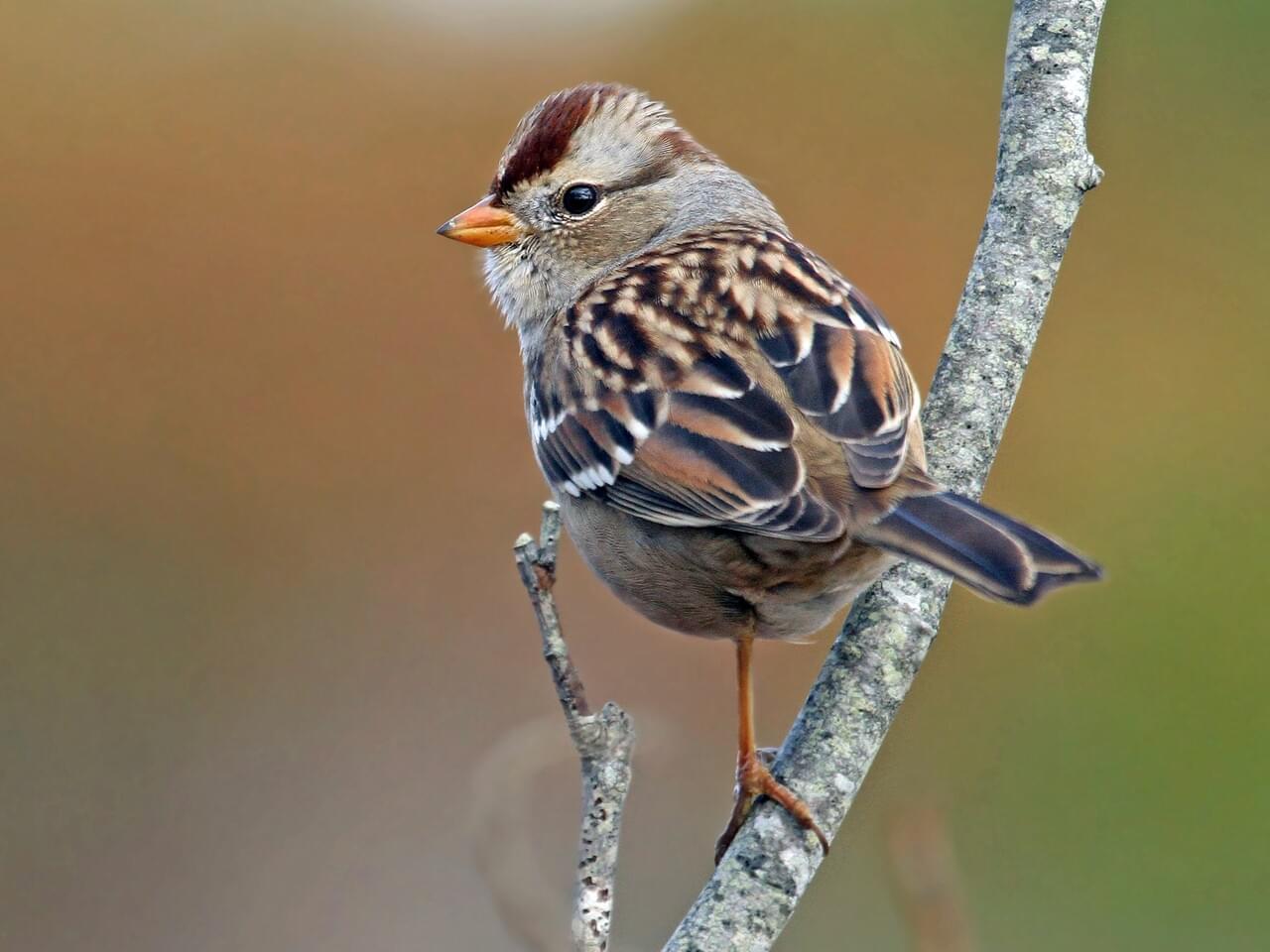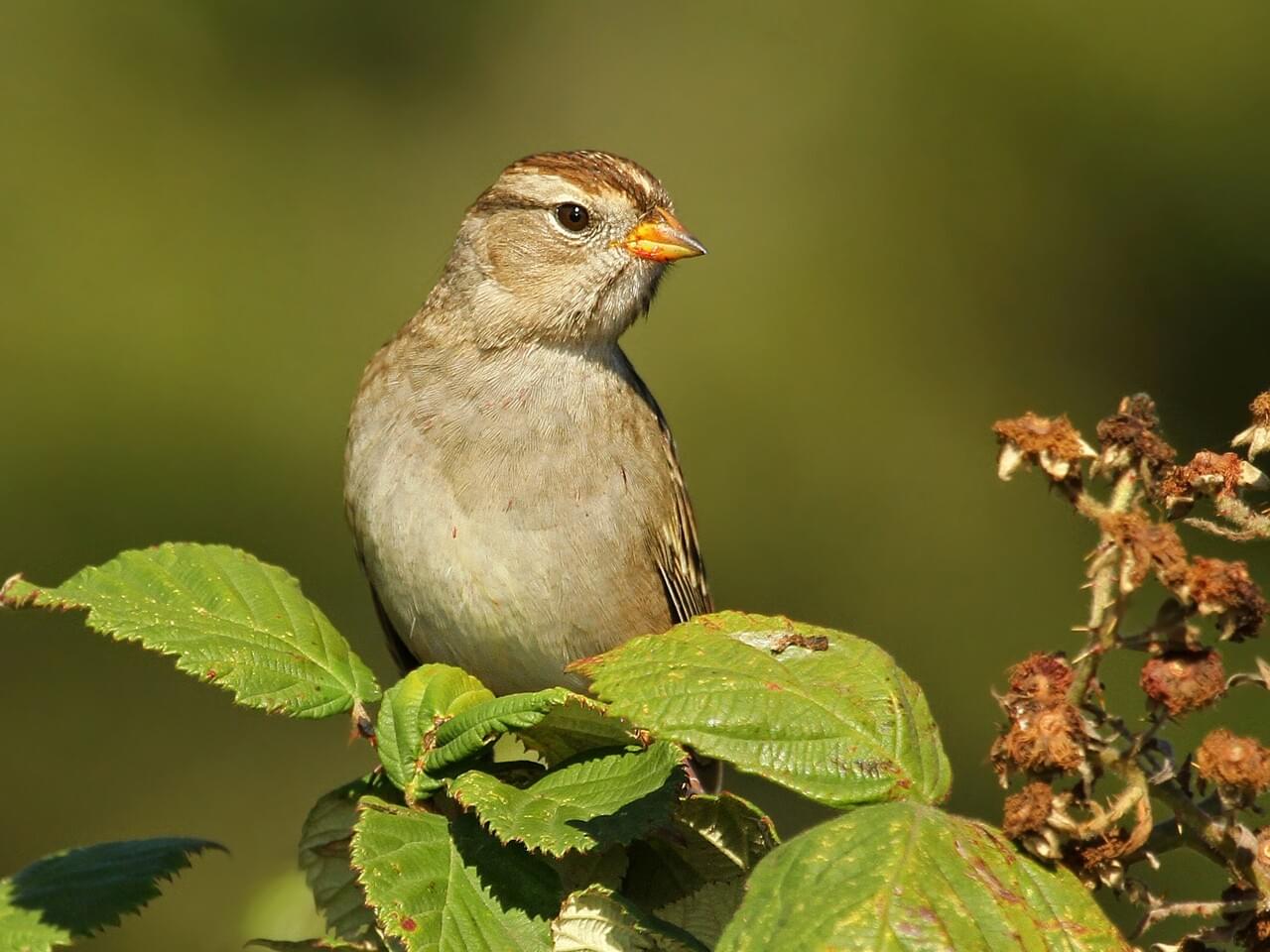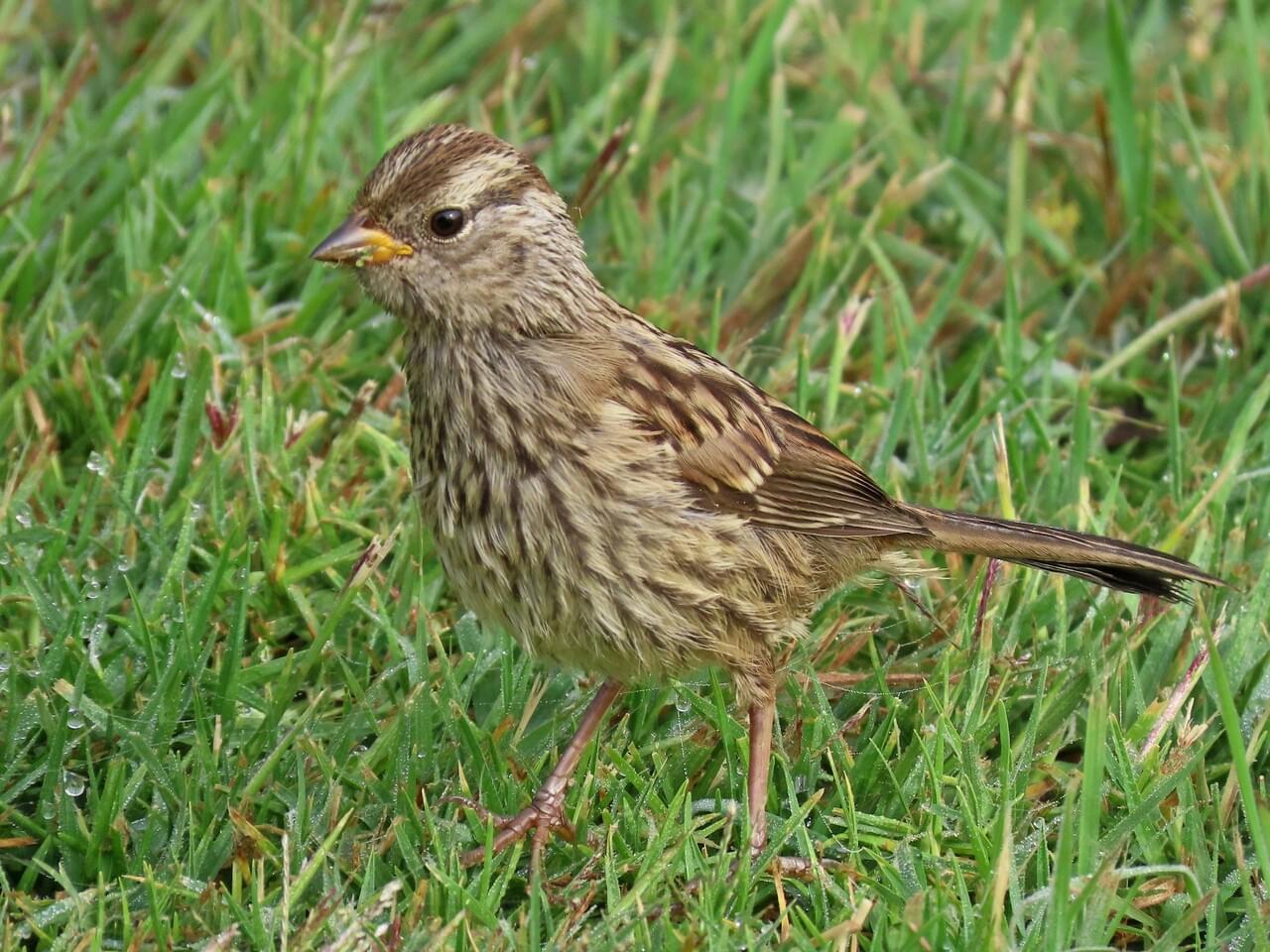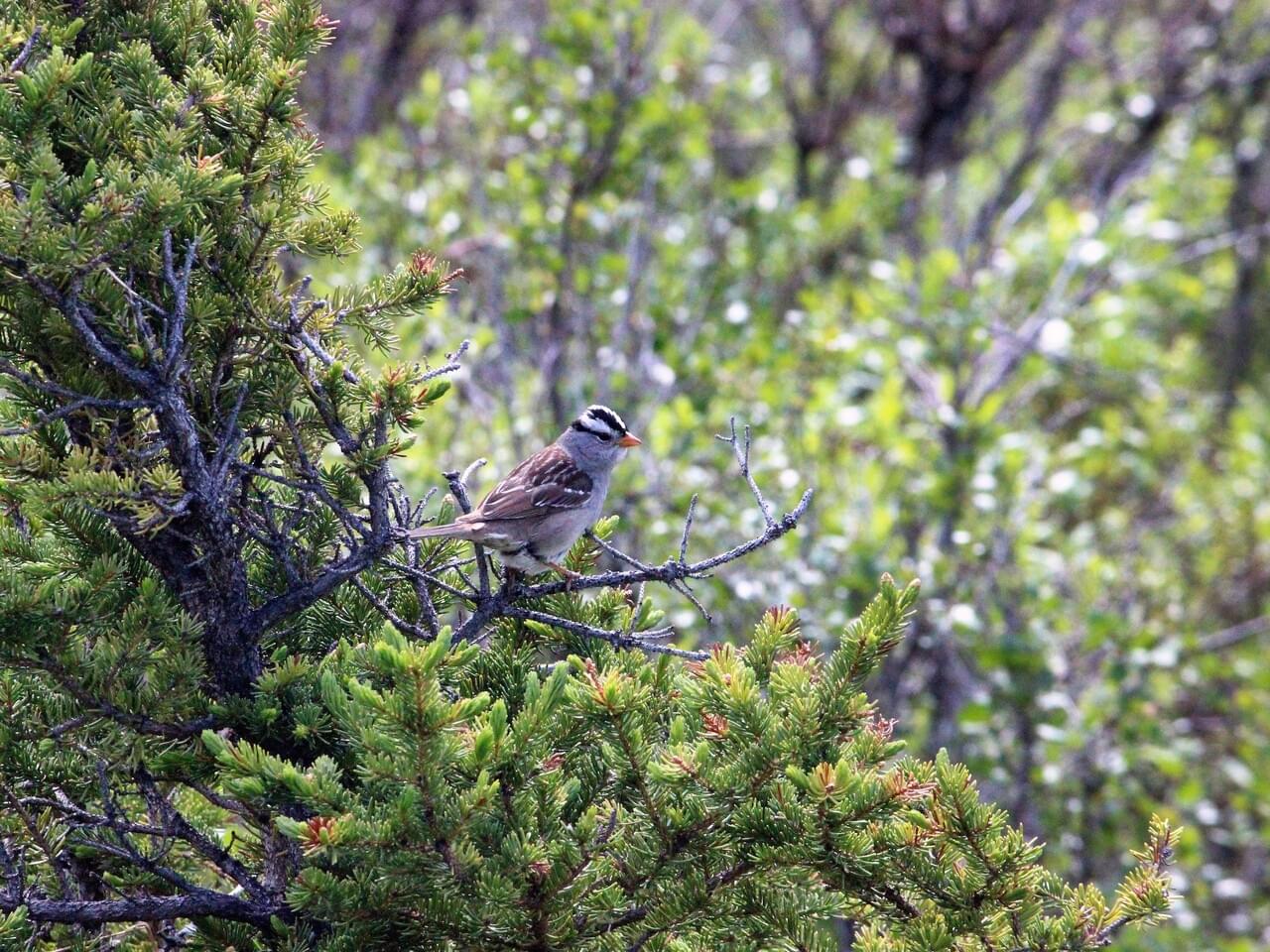 Photo ©
Jim Ellis
Photo ©
Jim Ellis
White-crowned Sparrow
Regional Species
White-crowned Sparrows appear each winter over much of North America to grace our gardens and favorite trails (they live in parts of the West year-round). The smart black-and-white head, pale beak, and crisp gray breast combine for a dashing look – and make it one of the surest sparrow identifications in North America. Watch for flocks of these sparrows scurrying through brushy borders and overgrown fields, or coax them into the open with backyard feeders. As spring approaches, listen out for this bird’s thin, sweet whistle.
Range
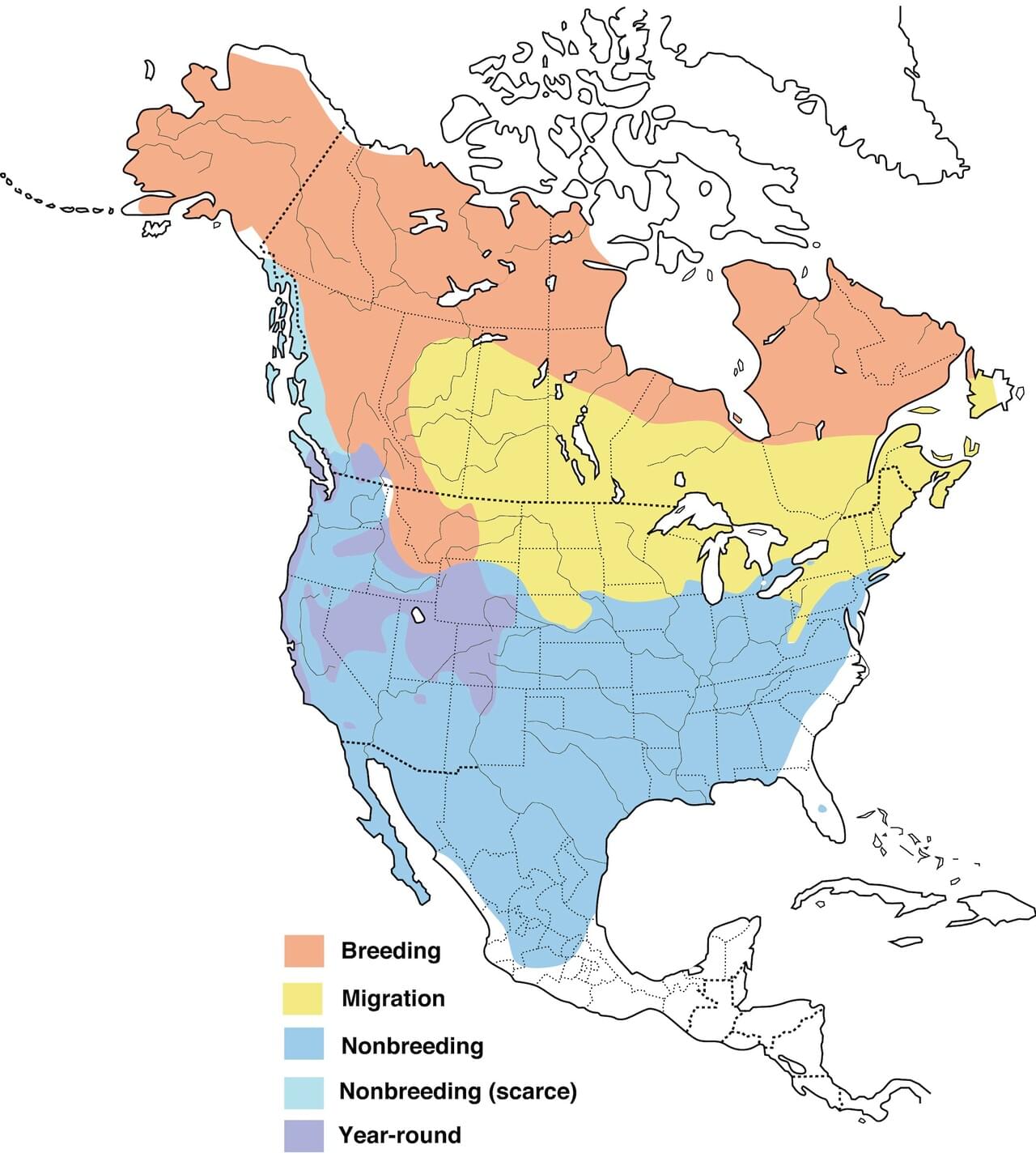
Habitat
White-crowned Sparrows breed in open or shrubby habitats, including tundra, high alpine meadows, and forest edges. Patches of bare ground and grasses are important characteristics. During winter and on migration these birds frequent thickets, weedy fields, agricultural fields, roadsides, and backyards.
Food
White-crowned Sparrows eat mainly seeds of weeds and grasses, plus considerable numbers of caterpillars, wasps, beetles, and other insects during the summer. They also eat grains such as oats, wheat, barley, and corn, and fruit including elderberries and blackberries.
Behavior
White-crowned Sparrows hop across the ground and through low foliage in brushy habitats. You may see them “double-scratching,” a move they share with towhees involving a quick hop backwards to turn over leaves followed by a forward hop and pounce. When these birds arrive on their breeding grounds males and females quickly pair, then wait until snow has melted enough to begin nest building. At the end of summer the pairs break up and winter separately, but when both members of the pair return the next summer, about two-thirds of the pairs re-form. Young birds move very little for the first few days after they leave the nest, and don’t typically learn to fly until a week or so later. Siblings can stay with each other for more than two months after fledging.
Nesting
Females build nests out of twigs, coarse grasses, pine needles, moss, bark, and dead leaves. They line the nest cup with fine grasses and hairs. The finished product is about 5 inches across and 2 inches deep, and takes the female 2-9 days to complete.
Appearance
Typical Sound
© William W. H. Gunn | Macaulay Library
Size and Shape
The White-crowned Sparrow is a large sparrow with a small bill and a long tail. The head can look distinctly peaked or smooth and flat, depending on the bird’s attitude.
Color Pattern
First impressions of White-crowned Sparrows tend to be of a plain, pale-gray bird; next your eye is drawn to the very bold black-and-white stripes on the head and the pale pink or yellow bill. Learn this bird's size and shape so you're ready to identify young birds that have brown, not black, markings on the head.
Plumage Photos
Similar Species
The White-throated Sparrow has a bright white throat patch and yellow between the bill and the eyes. They often have a duskier or dingy appearance overall - not as crisp or clean as adult White-crowned Sparrows. Adult Golden-crowned Sparrows have no white on the head, and the crown stripe is dull yellow, not white. Immature Golden-crowned Sparrows usually have some yellow on the crown, helping to distinguish them from immature White-crowned Sparrows, which they closely resemble. Female House Sparrows look a bit like immature White-crowned Sparrows, but they are smaller, shorter tailed, and smaller billed, with an unmarked face and no white on the wing.
Did you know?!
- A young male White-crowned Sparrow learns the basics of the song it will sing as an adult during the first two or three months of its life. It does not learn directly from its father, but rather from the generalized song environment of its natal neighborhood.
- Because male White-crowned Sparrows learn the songs they grow up with and typically breed close to where they were raised, song dialects frequently form. Males on the edge of two dialects may be bilingual and able to sing both dialects.



